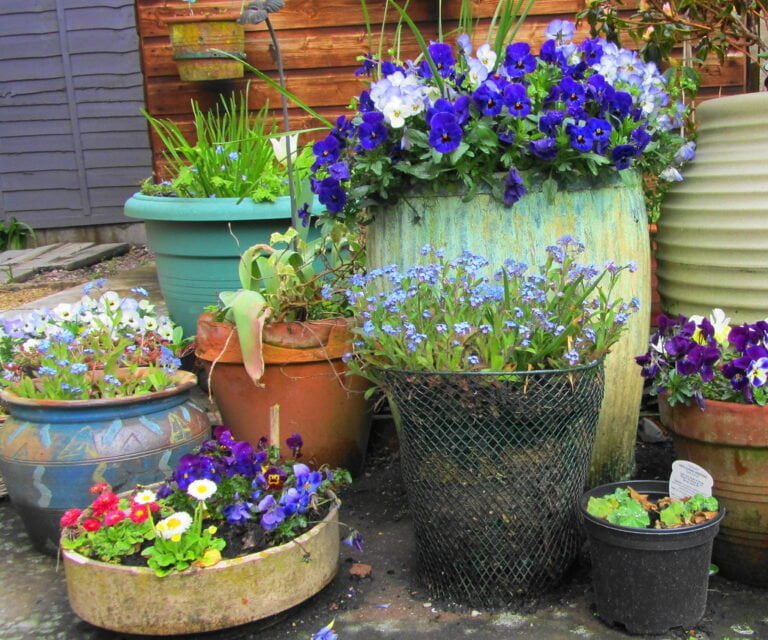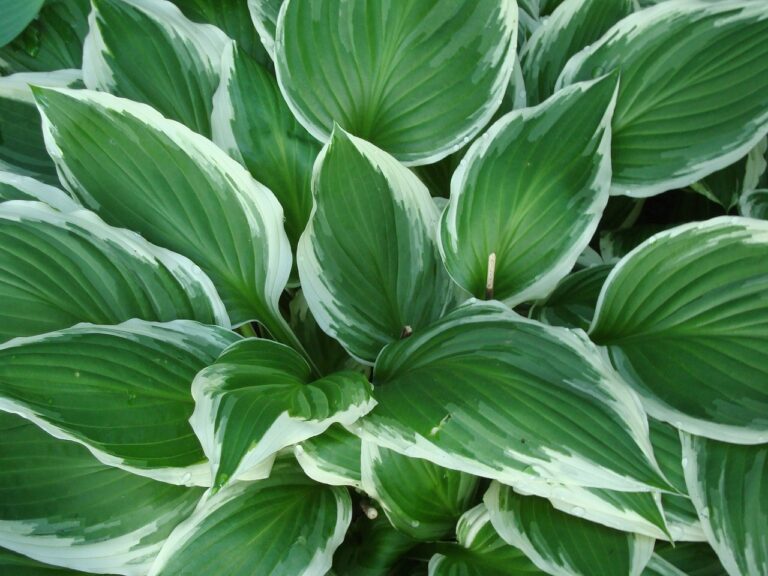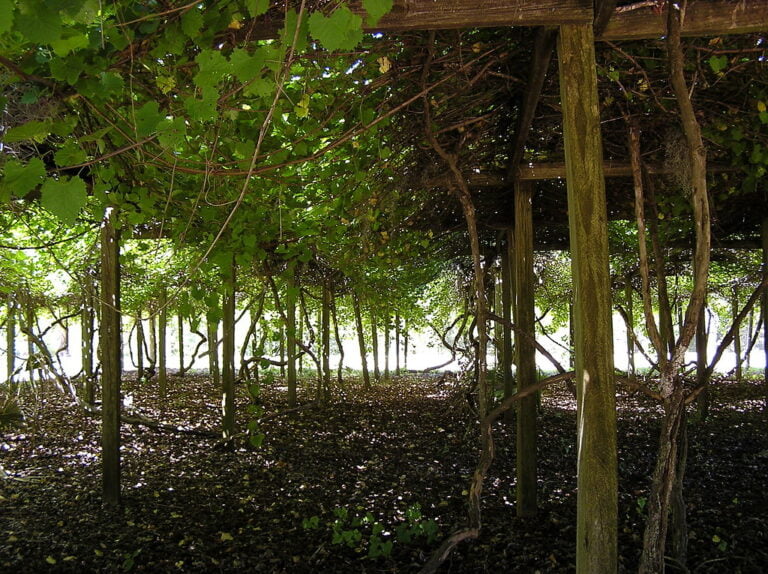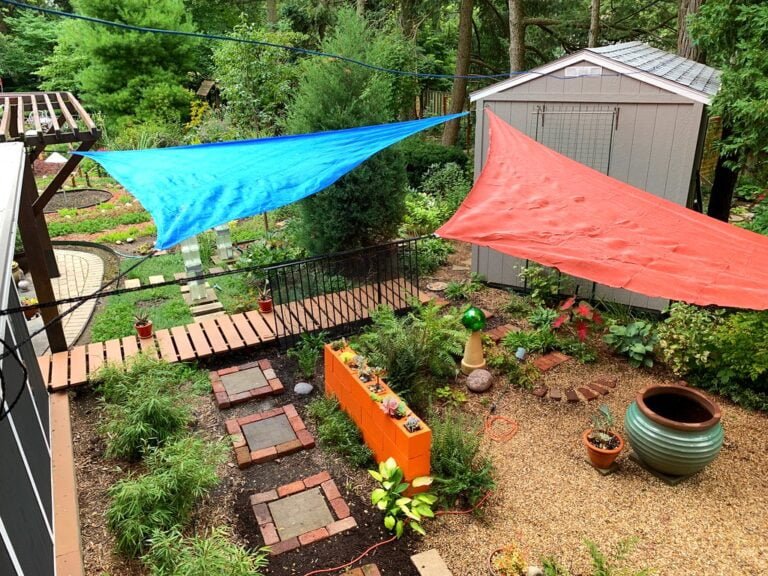Essential Maintenance Tips for Shade Gardens: Pruning, Weed Control, and Pest Management
For a thriving shade garden, prune in late winter or early spring using sharp tools. Trim for shaping and good air circulation, cutting at a 45-degree angle above buds. Mulch to prevent weeds and retain soil moisture, hand-weed for accuracy, and use weed barriers. Identify pests for the best management – look for signs of damage. Use natural methods like beneficial insects and herb barriers. Time pruning for late winter, weed in moist soil, and control pests organically for healthy shade plants. Maintain a healthy garden with proper care for lasting success in your shade oasis.
Pruning Techniques for Shade Plants
When maintaining shade gardens, I find that using precise pruning techniques in late winter or early spring is important for the vitality and appearance of shade plants. Pruning during this time allows for the removal of dead branches, promoting healthy growth. I always make sure my tools are sharp and clean to make precise cuts, as clean cuts heal better and reduce the risk of disease.
Trimming back overgrown branches not only shapes the plant but also improves air circulation and light penetration, essential for the overall health of shade plants. I make sure to cut at a 45-degree angle just above a bud or branch junction to encourage optimal healing and growth. This method aids in maintaining the shape, size, and vigor of the plants, keeping them looking their best.
Effective Weed Control Methods
To effectively manage weeds in shade gardens, employing a combination of mulching, hand-weeding, barrier methods, and organic weed killers is essential. Here are some effective weed control methods for maintaining a flourishing shade garden:
- Mulching: Mulching is a highly effective method for suppressing weeds in shade gardens. By blocking sunlight and creating a barrier, mulch hinders weed growth and helps retain moisture in the soil.
- Hand-weeding: Hand-weeding is important for removing weeds in hard-to-reach areas of shade gardens where tools might not be practical. It allows for precise removal of weeds without disturbing surrounding plants.
- Weed fabric or barriers: Using weed fabric or barriers can prevent weed seeds from germinating and infiltrating shade garden beds. These materials act as a physical barrier, reducing the need for constant weeding.
- Organic weed killers: Applying organic weed killers like vinegar or salt can help control weeds without harming the environment in shade gardens. These natural alternatives are effective at targeting weeds while being environmentally friendly.
Regularly inspecting shade garden areas for weed growth and promptly addressing any weeds can prevent them from spreading and overtaking the garden. By incorporating these methods into your weed control routine, you can maintain a healthy and weed-free shade garden while practicing environmentally friendly pest management.
Identifying Common Garden Pests
In managing shade gardens, a key aspect involves accurately identifying common garden pests and understanding their impact on plant health and growth. Common garden pests like aphids, spider mites, whiteflies, and caterpillars can cause significant damage to plants if left unchecked. By observing physical characteristics such as size, color, and feeding habits, gardeners can effectively recognize these pests and implement appropriate pest management strategies.
Signs of pest damage are vital indicators of pest presence in shade gardens. Look out for holes in leaves, yellowing foliage, webbing, or distorted growth, as these are telltale signs that pests are affecting the plants. Integrated pest management is a holistic approach that combines techniques like biological controls, introducing beneficial insects, and using organic sprays for pest control. Regular monitoring of plants, early detection of pests, and taking prompt action are essential practices to prevent severe infestations in shade gardens.
Natural Pest Management Strategies
Implementing natural pest management strategies in shade gardens involves a combination of attracting beneficial insects, planting insect-repelling herbs, using physical barriers, and introducing predatory insects to control pest populations effectively. Here are some practical tips for natural pest management in shade gardens:
- Attract Beneficial Insects: Consider planting flowers like marigolds or alyssum to attract ladybugs, lacewings, and other beneficial insects that prey on garden pests. These insects can help keep pest populations in check naturally.
- Plant Insect-Repelling Herbs: Herbs such as basil, mint, and lavender not only add fragrance and beauty to your garden but also repel common garden pests like aphids, mosquitoes, and beetles. Integrate these herbs throughout your landscape to deter pests effectively.
- Use Physical Barriers: Employ row covers or netting to physically protect your shade garden plants from pests. These barriers act as a shield, preventing pests from reaching your plants and causing damage without the need for chemical interventions.
- Introduce Predatory Insects: Release predatory insects like praying mantises or beneficial nematodes into your garden to combat pest populations naturally. These insects can help control pests like caterpillars, aphids, and spider mites, promoting a healthy and balanced ecosystem in your shade garden.
Timing for Pruning and Weeding
Pruning and weeding play essential roles in maintaining the health and aesthetics of shade gardens throughout the year. To guarantee the best health and shape of shade garden plants, it is advisable to prune them in late winter or early spring before new growth emerges. This timing allows plants to focus their energy on producing new shoots rather than healing from pruning wounds.
Weeding is equally important in maintaining a healthy shade garden. Weeds compete with plants for resources and can harbor pests and diseases. To effectively remove weeds and prevent regrowth, weeding should be done in early spring or late fall when the soil is moist. This damp soil makes it easier to pull out the entire weed, including the roots, reducing the chances of regrowth.
Integrated Pest Control Solutions
Integrated pest control solutions in shade gardens require a strategic combination of cultural, biological, and chemical methods to effectively manage pest populations. To guarantee a healthy and thriving shade garden, consider the following integrated pest control strategies:
- Selecting Pest-Resistant Plants: Opt for plant varieties that are naturally resistant to common shade garden pests. By choosing plants that are less susceptible to infestations, you can minimize the need for chemical interventions.
- Utilizing Beneficial Insects: Introduce beneficial insects like ladybugs and lacewings to your shade garden. These natural predators can help control pest populations without the use of harmful chemicals, promoting a balanced ecosystem.
- Regular Monitoring and Early Intervention: Keep a close eye on your plants for any signs of pest activity. Early detection allows for prompt intervention, preventing minor pest issues from turning into full-blown infestations.
- Employing Organic Pest Control Methods: When necessary, opt for organic pest control solutions such as neem oil or insecticidal soap. These methods are effective in managing pests while minimizing harm to beneficial insects in your shade garden.
Maintenance Schedule for Shade Gardens
In maintaining shade gardens, timing is essential. Proper pruning, efficient weed prevention methods, and organic pest control are vital aspects of a well-rounded maintenance schedule. By staying on top of these tasks, I guarantee that my shade garden remains healthy and thriving throughout the seasons.
Timing for Pruning
To ensure optimal growth and health in your shade garden, it is crucial to time your pruning activities correctly, targeting late winter or early spring before the onset of new growth. Here are some key points to keep in mind for pruning in shade gardens:
- Pruning Timing: Schedule pruning sessions for late winter or early spring.
- Plant Specificity: Tailor pruning times based on plant type, with most shrubs benefitting from pruning after flowering.
- Avoid Late Summer/Fall: Refrain from pruning in late summer or fall to prevent stimulating vulnerable new growth.
- Benefits of Pruning: Regular pruning improves air circulation and light penetration in dense shade areas.
Weed Prevention Methods
In maintaining shade gardens, a vital approach to weed prevention through mulching, hand-weeding, and strategic plant spacing is key to fostering a healthy and thriving garden ecosystem. Mulching with organic materials like bark or compost serves to block sunlight and suppress weed germination effectively. Hand-weeding regularly is essential to remove existing weeds that could compete with shade-loving plants. Installing landscape fabric beneath mulch provides an additional barrier against weed growth by inhibiting root penetration. Utilizing a pre-emergent herbicide designed for shade plants can also prevent weed seeds from germinating in shaded areas. Maintaining proper spacing between plants in shade gardens is essential to reduce competition for sunlight and resources, minimizing opportunities for weeds to establish and thrive.
Organic Pest Control
Organic pest control in shade gardens relies on natural methods like companion planting, beneficial insects, and homemade remedies to effectively manage pests. To maintain a healthy and balanced ecosystem, here are some practical tips for organic pest control in shade gardens:
- Pest Monitoring: Regularly inspect plants for signs of pest damage to catch infestations early.
- Cultural Practices: Implement proper spacing, adequate watering, and good air circulation to prevent pest issues.
- Companion Planting: Grow plants that naturally repel pests or attract beneficial insects to help control pest populations.
- Homemade Remedies: Use homemade sprays like garlic and chili pepper mixtures to deter pests without harming beneficial insects.






